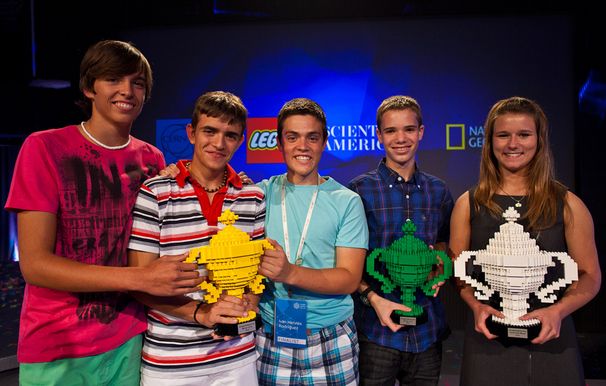Girl Programs Artificial 'Brain' to Diagnose Breast Cancer

A high school junior has created a computer brain that can diagnose breast cancer with 99 percent sensitivity. Seventeen-year-old Brittany Wenger of Sarasota, Fla., wrote a breast cancer-diagnosing app based on an artificial neural network, basically a computer program whose structure is inspired by the way brain cells connect with one another. She won grand prize at the Google Science Fair for her invention in ceremony held in Palo Alto, Calif. last night (July 23).
Like other artificial intelligence programs, artificial neural networks "learn" what to do by analyzing examples they're given and they perform better if they get more examples. In addition, they're able to detect patterns in data that are too complex for human brains or other types of programs to analyze. Just this past June, Google researchers built a neural network that learned to recognize cats on the Internet without any outside input.
Wenger wanted to get her computer brains to work on breast cancer because the least invasive diagnostic test for the disease, called fine needle aspirate, is also the least certain one. Often, if results aren't clear, patients need to undergo a second biopsy with a bigger needle or even surgery. Wenger wanted to boost the less-invasive test's success rates.
The young scientist gave several different artificial neural networks publicly available data from fine needle aspirate tests of breast cancer patients. By analyzing the data, each of the neural networks learned how to diagnose breast cancer, based on some characteristics of the different fine needle aspirate samples. [10 Things You Didn't Know About the Brain]
Wenger tested three commercially available neural networks, plus one she programmed herself using Java, a computer language she learned in school, she wrote on the web page she set up when applying to the Google Science Fair.
Her own network was the most reliable, she found. When she tested it with 681 fine needle aspirate samples, her program gave correct diagnoses for 94 percent of the cases and correctly identified more than 99 percent of the cancerous cases. The program said its analysis was "inconclusive" about 4 percent of the time. Less than one percent of the answers were false negatives — benign diagnoses for lumps that were actually cancerous, a result she especially wanted to avoid, she wrote on her project page. Commercial neural networks had a false negative rate of about 5 percent.
"I think it might be hospital ready," she told a local ABC station that interviewed her in March.
Sign up for the Live Science daily newsletter now
Get the world’s most fascinating discoveries delivered straight to your inbox.
Wenger is hosting her app, called Cloud4Cancer, online, so that other doctors can enter in their own data, she said. Given more data, it should work even better, she wrote. She also thinks her approach can be used to make neural networks that diagnose other diseases, including prostate cancer and ovarian cancer.
Her Google win earns her an internship at one of the institutions hosting the Google Science Fair, a trip to the Galapagos Islands, a trophy made of white Lego bricks and a $50,000 scholarship for college. In the future, she wants to major in computer science and work as a pediatric oncologist, she told ABC.
Follow InnovationNewsDaily on Twitter @News_Innovation, or on Facebook.












